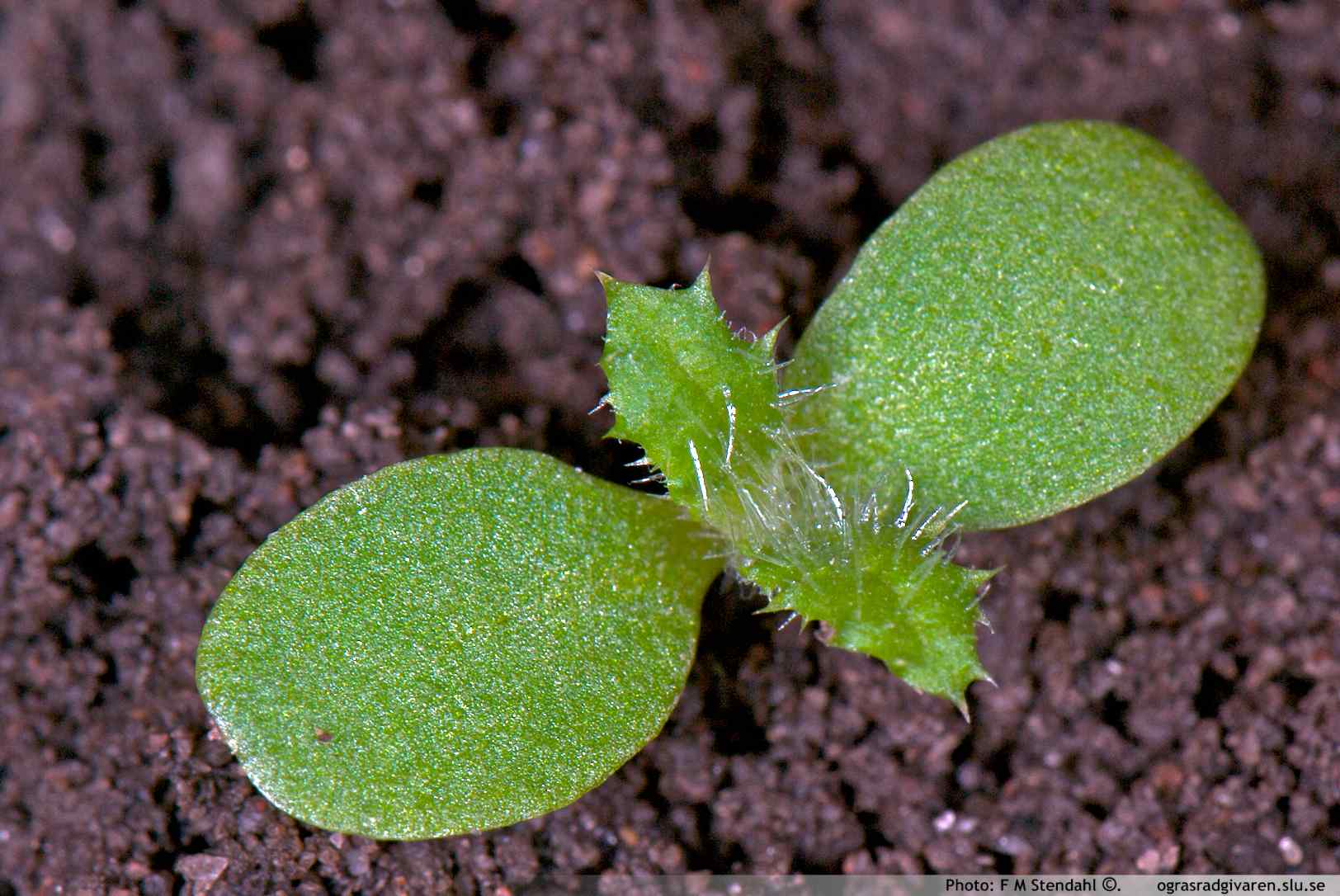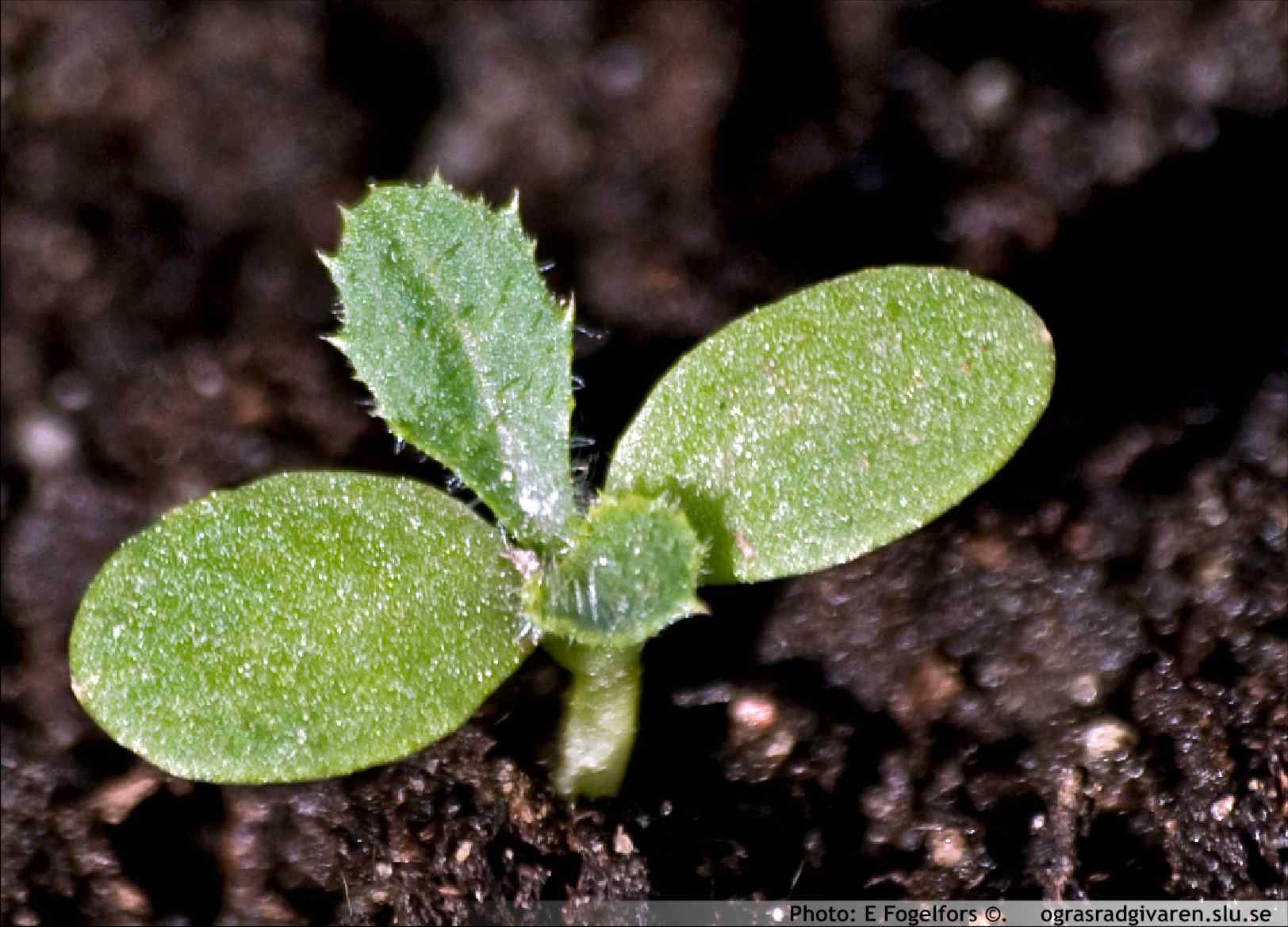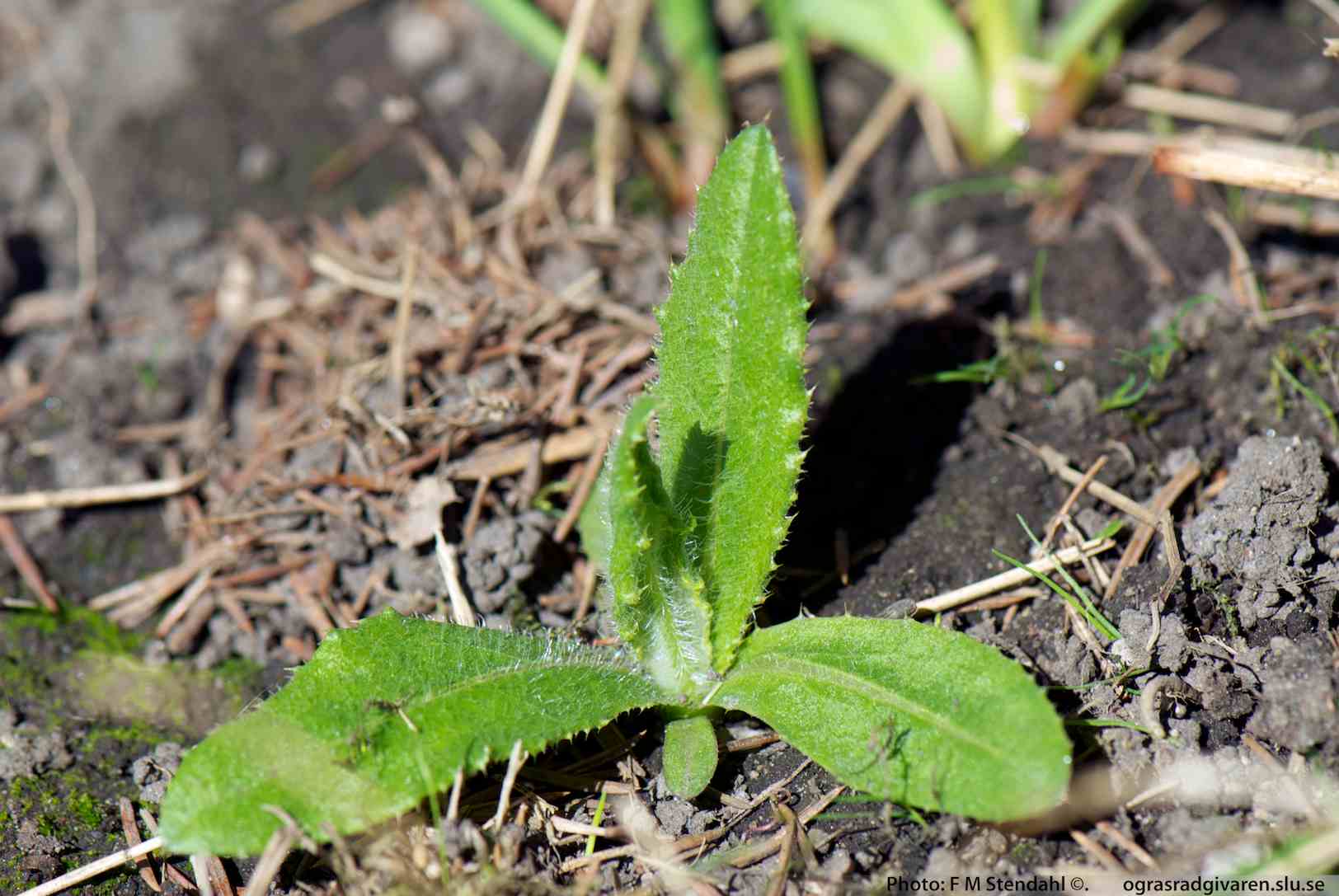Abiotic influence
Influence exerted by non-living organisms, i.e. by factors such as climate and chemical and physical properties of the soil. Decomposition products from previously living organisms can be of critical importance.
Adsorption
Attachment to a surface.
Adventitious plant
Species that has been introduced accidentally but does not yet have the ability to spread significantly, e.g. from ports and warehouse areas. Often temporary.
Adventitious shoot/bud
Shoot/bud formed from previously dormant tissue, often after external influence, e.g. cutting, pruning of older shoots. Adventivus (Latin) means something that breaks through.
Annual
One-year plant that can flower and set seed in the same year.
Apomictic
Plant that can produce seeds without fertilisation.
Apophyte
"Original plant" - species that has expanded its habitat due to activities in human cultivation, e.g. mowing, grazing (cf. synanthrope).
Archeosynanthrope
Plant introduced directly or indirectly by humans in the past.
Aromatic
Perfumed or fragranced.
Autecology
Study of the interactions between an individual species and its surroundings.
Biennial
Two-year plant. During the first year it forms a rosette. In the following year it develops a shoot that can flower and set seed and then normally die entirely.
Biomass
Mass of mainly living plant material (expressed as fresh weight or dry weight).
Biotope
Habitat for a particular group of plants, animals and other organisms (cf. growing site).
Biotype
Individuals with a genetic composition that gives them similar appearance and behaviour.
C4-plants
Plants where the base molecule in the photosynthetic reaction contains 4 carbon (C) atoms instead of the 3 in C3-plants. C4 plants have an optimum temperature for growth that is approx 10 degrees higher than for C3-plants and cope with drought better. Therefore C4-plants have an advantage over C3-plants in a warm, dry climate. Examples of C4-plants are millet, amaranth and petty spurge. In the Nordic climate such species many occur in open, poorly competitive crops.
Capsule
A dry fruit formed from two of more united carpels and dehiscing when ripe (usually by splitting into pieces or opening at summit by teeth or pores).
Chamaephyte
Plant that bears hibernating buds on persistent shoots near the ground.
Chinampa
Cultivation method used before Spanish colonisation in ancient Mexico. Small, rectangle-shaped areas (< 3000 m=) were created in wetlands. The soil was taken from canal excavations and bottom sediment, which were held in place by stockades. To maintain the very high soil fertility, nutrient-rich sediment material and organic mulch was added continually. The crops grown were maize, squash, amaranth, chilli, beans and flower. The latter were used for various Aztec ceremonies to worship the gods
Ciliated
Edge lined with hairs.
Cleistogamous
Having flowers which self-pollinate and never open fully or self-pollinate before opening.
Clone
A plant derived from the vegetative reproduction of a parent plant, with both plants having identical genetic constitutions.
Cryptogams
A collective term for the "lower plants" which produce spores and do not have stamens, ovaries or seeds; literally plants whose sexual reproductive organs are not conspicuous. Typically includes the ferns, bryophytes and algae, and sometimes fungi (including lichenized fungi).
Dicotyledon
Plant with two cotyledons.
Diversity
Range or variety of species
Ecological amplitude
Refers to the amount of variation in a certain factor, e.g. light, temperature, moisture, an organism (e.g. a plant) can tolerate for survival (opposite to physiological amplitude).
Ecology
From the Greek oikos house, home, and -logia science, study (compare economy = "husbandry"). The area of biology that refers to the interaction between an organism, e.g. a plant, and the environment in which it lives.
Ecosystem
A limited part (large or small) of nature that we have decided for some reason to study as a whole. Consists of a living component (biotic) and a non-living component (abiotic) that is found within the system.
Ecotype
Modification of a species as a result of site influences on the genetic characteristics.
Endemic
Species only present in a limited area where it is ínativeí.
Endozooic spread
Spread of seeds through being eaten by animals, particularly birds, and passing through the digestive tract.
Epidermis
Protective surface layer of cells on a plant.
Epizootic spread
Spread of seeds by animals or humans through attachment to e.g. fur or clothing.
Evolution
Development / change in organisms to altered characteristics and adaptation (often to a higher, more specialised type).
Facultative
Voluntary, optional. Opposite to obligate.
Fitness
Measure of the reproductive ability or growth rate of a certain genotype (degree of adaptation to the particular habitat).
Flora
The plants occurring within an area or a period of time.
Generalist
Species that can live in a broad spectrum of environments.
Generative phase
Stage from development of flower buds through flowering and seed formation until the seeds or fruit fall from the tree.
Genetic variation
Variation due to gene mutation or recombination of genetic material
Genotype
An individualís inherited genetic characteristics (intrinsic).
Geophyte
Plant with its overwintering shoot tips under the soil surface, e.g. bulb and tuber plants.
Gland
Small group of cells releasing or containing oil, resin, etc.
Glandular hair
Hair that exudes or contains oils, resins, etc.
GMO
Genetically modified organism.
Grass
Monocotyledonous species belonging to the family Poaceae
Green biomass
Undried plant material.
Green manure
Manuring through ploughing in a soil-improving crop (green manure crop).
Hair
One or multi-celled protrusion from the epidermis (outer surface tissue of the plant).
Hapaxanth
Plant that flowers and produces seed only once and then dies.
Hay
Dried, storable material of grassland plants for feed.
Hemerophile
Plant that is benefited in some way by cultivation practices.
Hemerophobe
Plant that is directly hampered by cultivation practices.
Hemicryptophyte
Plant with shoot tips overwintering near the soil surface, e.g. most flowering plants and grasses.
Herbicide
Chemical weed control agent (Latin herba = plant and -cid = killer).
Horticulture
Garden science.
Humus
Organic material (e.g. detritus) that has undergone various stages of decomposition, the last stage being humus.
Hybrid
Cross between two species.
Hypocotyl
Part of the stem under the cotyledons, transitions into root.
Intermediary
Intervening form.
Internode
Piece of stem between two nodes in plants where these are clearly apparent, e.g. grass and young shoots in several other plants.
Interspecific relationship
Relationship between species.
Intraspecific relationship
Relationship within species.
Invasive species
Species that spreads and can establish in areas outside its original habitat and e.g. threaten biological diversity and human health and cause economic damage.
Mat-forming plant
Species that forms a dense, low growing mat of vegetation from runners.
Mecophile
Plant species that spreads its seeds with the help of animals, e.g. greater celandine, cleavers.
Monocotyledon
Plant with one cotyledon.
Monoculture
Cultivation of a single plant species (crop) on a field.
Morphology
Science of an organismís external appearance.
Mutation
A natural, unpredictable change in genetic material that brings about an alteration in the characteristics of a plant or other organism. The alteration is often negative, leading to difficulties in survival. However it can sometimes lead to better adaptation and survival capacity.
Mycorrhiza
Means ífungus rootí. Refers to interaction between fungus and plant roots that is of benefit to both organisms.
Naturalised
Plant that has established itself and can reproduce in a new area for that species.
Nectar
Sweet liquid produced by glands that attracts insects to the flower.
Neophyte
Newcomer plant that spontaneously spreads in its new area, e.g. bindweed.
Neosynanthrope
Plant species directly or indirectly introduced by man relatively recently, e.g. pineapple weed, false oatgrass, dwarf snapdragon.
Node (leaf knot)
Point of leaf attachment on a stem or straw.
Obligate
A compulsory behaviour or method of existence. An obligate parasite is an organism that can only live parasitically. European dodder is an obligate parasite on another plant. Opposite facultative.
Plant cuticle
A protecting film covering the epidermis of leaves, young shoots and other aerial plant organs without periderm.
spp.
An abbreviation of species (plural), often used to collectively refer to more than one species of the same genus, as in "Astragalus spp"
Spur
A conical or tubular outgrowth from the base of a perianth segment, often containing nectar.
Thorn
A sharp, stiff point, usually a modified stem, that cannot be detached without tearing the subtending tissue; a spine. Compare prickle.
Viviparous
The development of plantlets on non-floral organs, e.g. leaves.



![]() Ager-Tidsel,
Ager-Tidsel,
![]() Põldohakas,
Põldohakas,
![]() Pelto-ohdake,
Pelto-ohdake,
![]() Akkerdistel,
Akkerdistel,
![]() Þistill ,
Þistill ,
![]() Tiruma usne,
Tiruma usne,
![]() Dirvine usnis,
Dirvine usnis,
![]() Åkertistel,
Åkertistel,
![]() Ostrożeń polny,
Ostrożeń polny,
![]() Бодяк полевой,
Бодяк полевой,
![]() Acker-Kratzdistel ,
Acker-Kratzdistel ,
![]() Åkertistel
Åkertistel